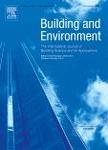版权所有:内蒙古大学图书馆 技术提供:维普资讯• 智图
内蒙古自治区呼和浩特市赛罕区大学西街235号 邮编: 010021

作者机构:Dalian Univ Technol Fac Infrastruct Engn Dalian 116024 Peoples R China
出 版 物:《BUILDING AND ENVIRONMENT》 (建筑与环境)
年 卷 期:2022年第221卷
核心收录:
学科分类:0830[工学-环境科学与工程(可授工学、理学、农学学位)] 08[工学] 0813[工学-建筑学] 0814[工学-土木工程]
基 金:Science and Technology Partnership Program, Ministry of Science and Technology of China [KY20202012] National Natural Science Foundation of China Liao Ning Revitalization Talents Pro-gram [XLYC1902068]
主 题:Radiant floor heating Distributed model predictive control Hydraulic coupling Control -oriented thermodynamic model Hierarchical optimization algorithm Set -point reset rule
摘 要:Radiant floor heating (RFH) is an advanced technology that can couple with renewable low-temperature sources and improve occupant thermal comfort. However, due to the large thermal inertia, the conventional control strategies based on heuristic rules have difficulty handling a room temperature response to changes in weather or set-points. Because of the excellent coping ability, model predictive control (MPC) has aroused increasing attention as a promising solution to manage RFH. This research is focused on the MPC scheme for RFH systems, especially large-scale RFH systems with hydraulic coupling. First, we develop a novel control-oriented thermodynamic model for an RFH system. A new calculating method for the floor surface temperature is adopted to avoid defining the thermal resistance and thermal capacity of the virtual core temperature layer, and the heat transfer along water flow and weather elements like solar radiation and wind are considered. Then an experiment is conducted to validate that the accuracy can be adequate for the prediction of MPC. Next, we design a distributed MPC scheme for RFH systems with hydraulic coupling. A supply reset rule for central equipment is improved, and a hierarchical optimization algorithm is proposed to implement the distributed MPC scheme. Then a simulation test is carried out with results showing that the scheme can achieve hydraulic decoupling between occupants, thus avoiding room temperature fluctuations and decreasing the root-mean-square error by 0.24 degrees C. An appropriate supply set-point is recommended that meets thermal comfort demands with minimum energy consumption.